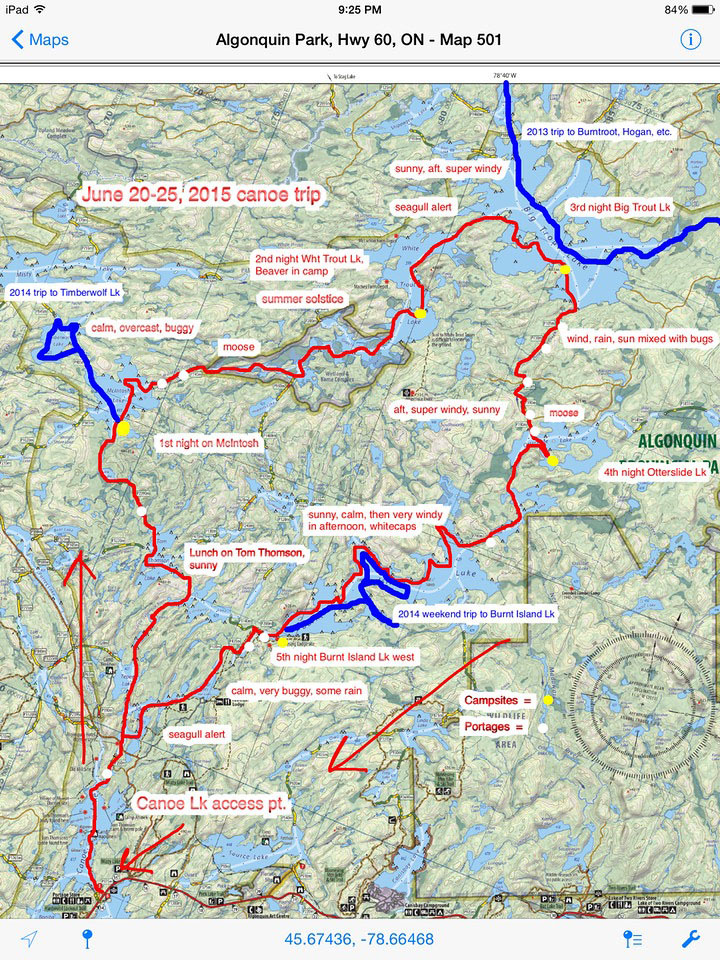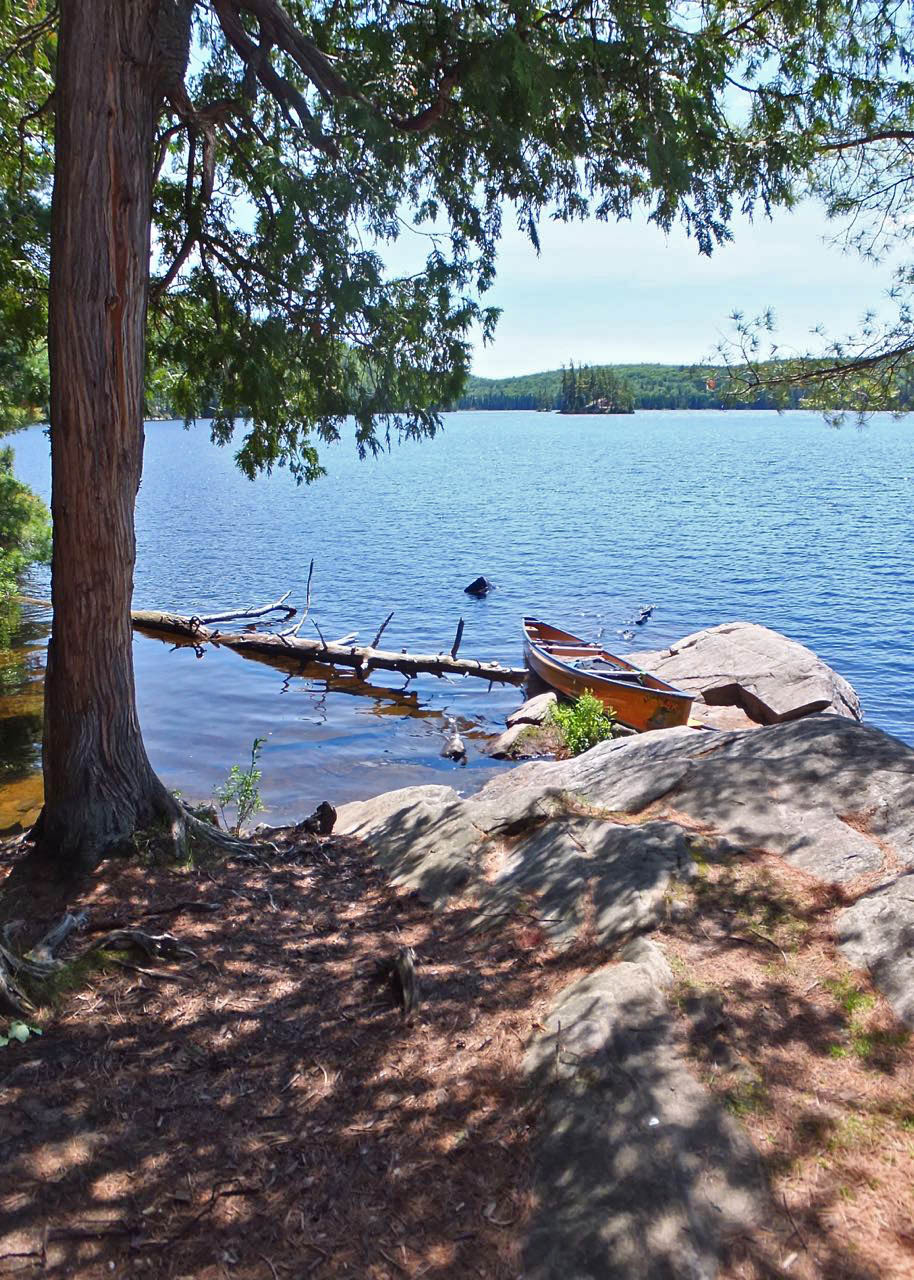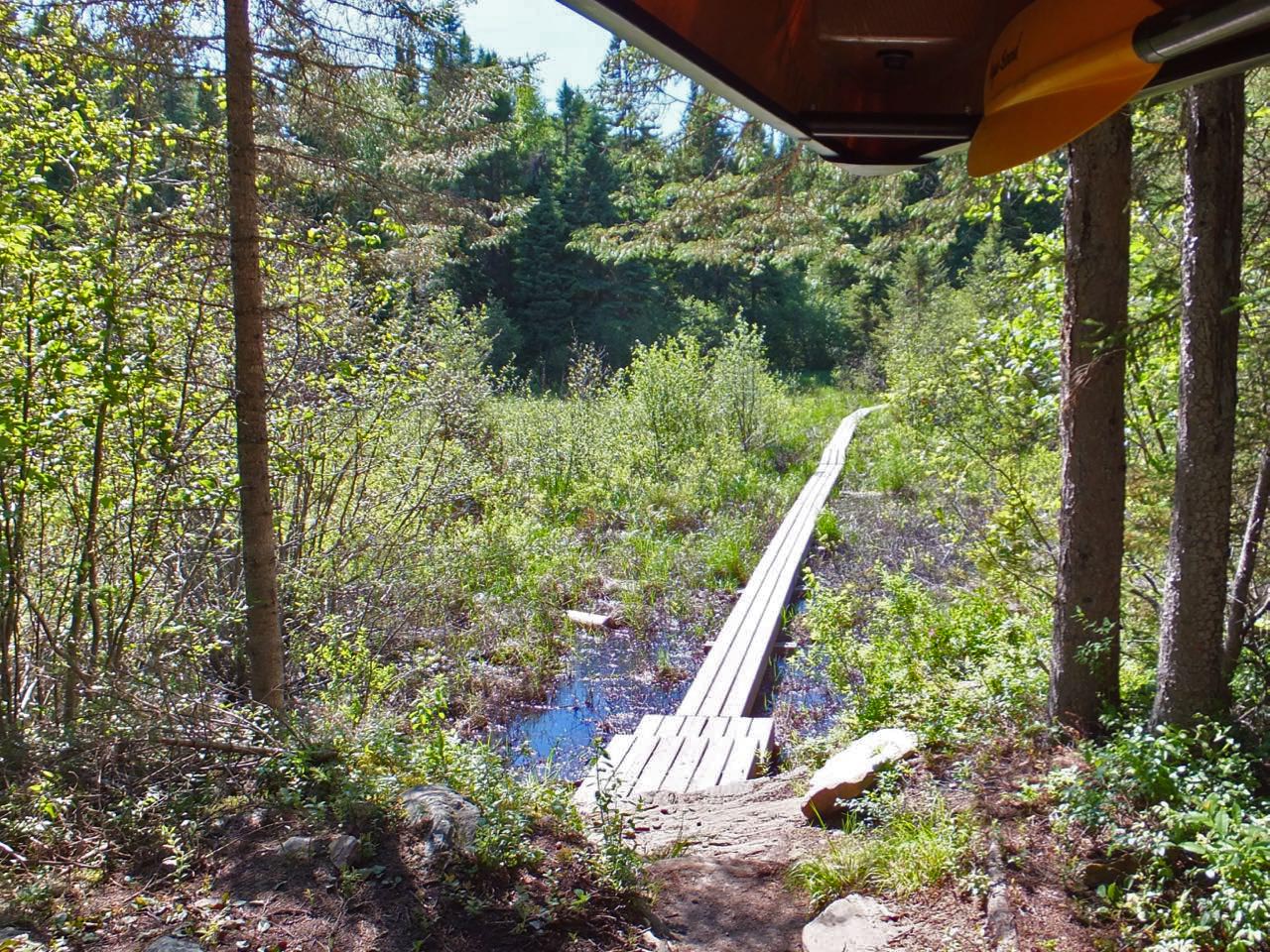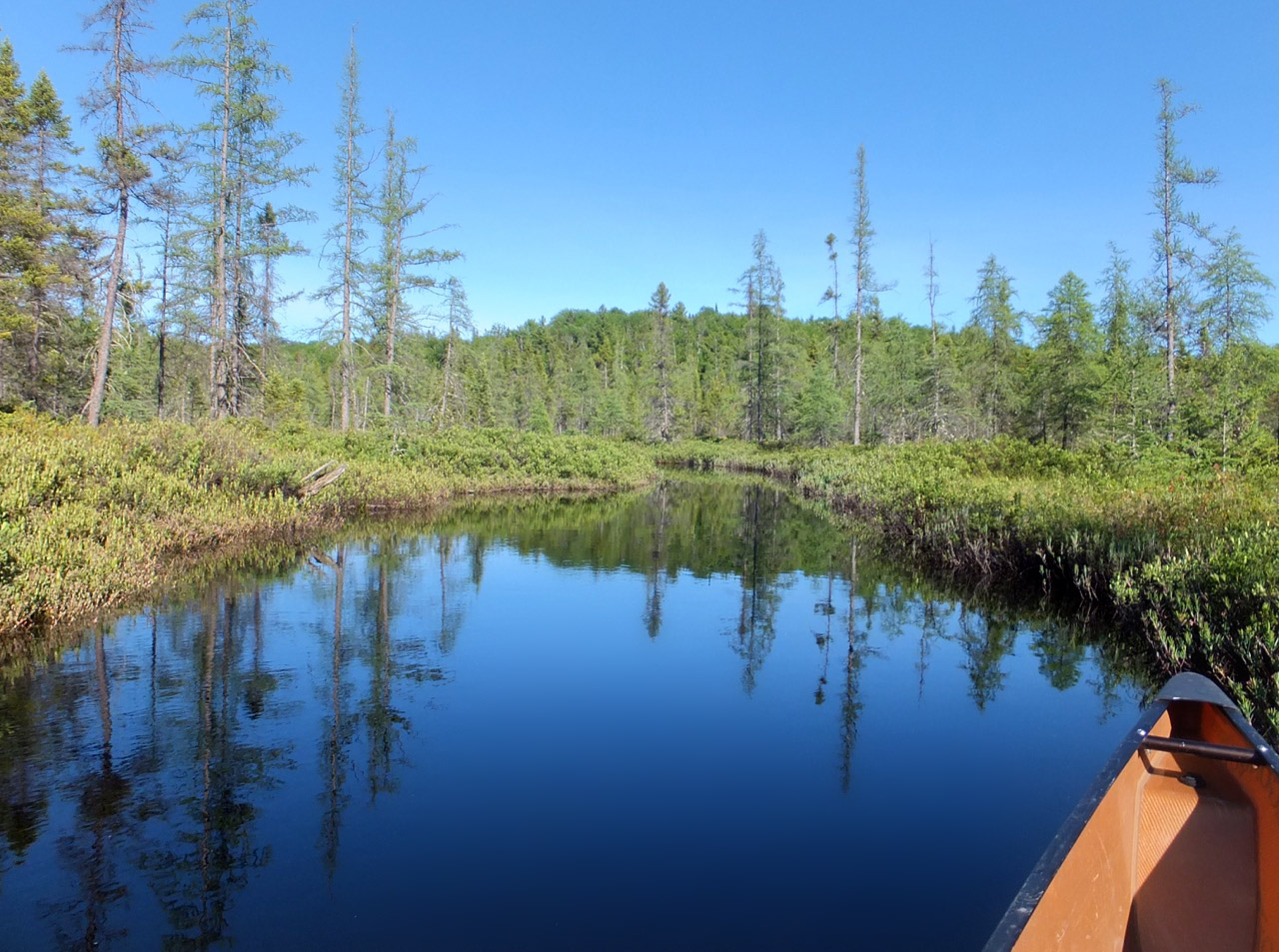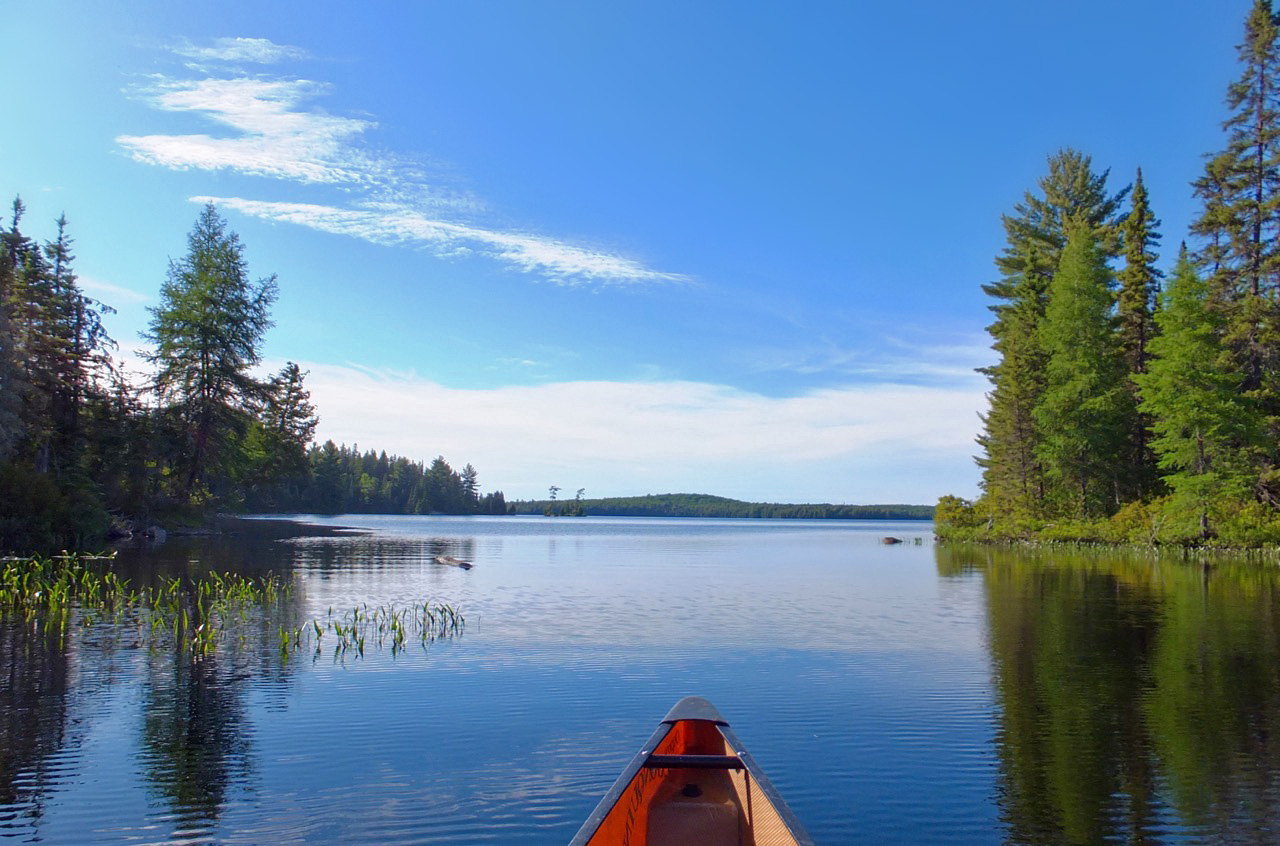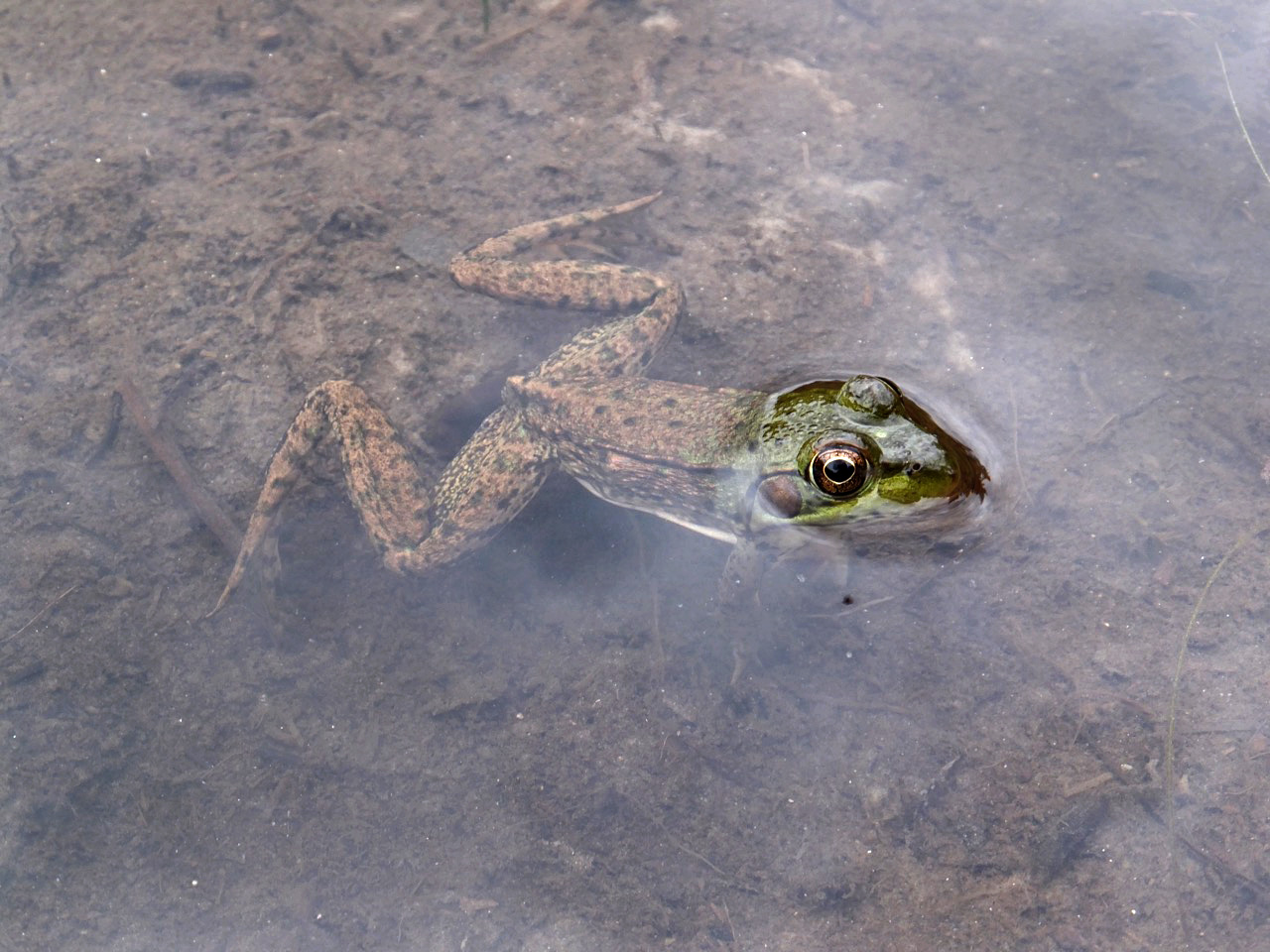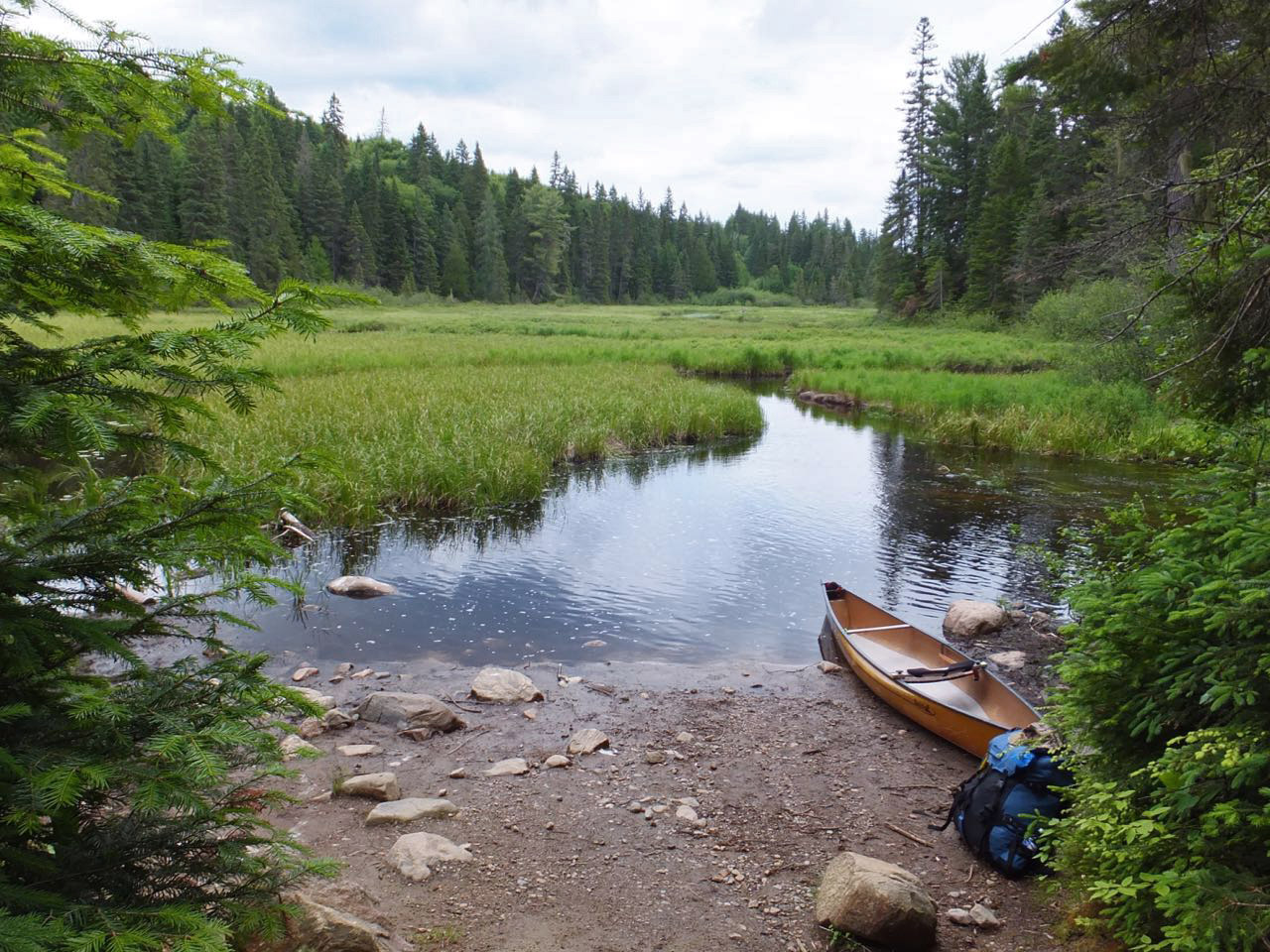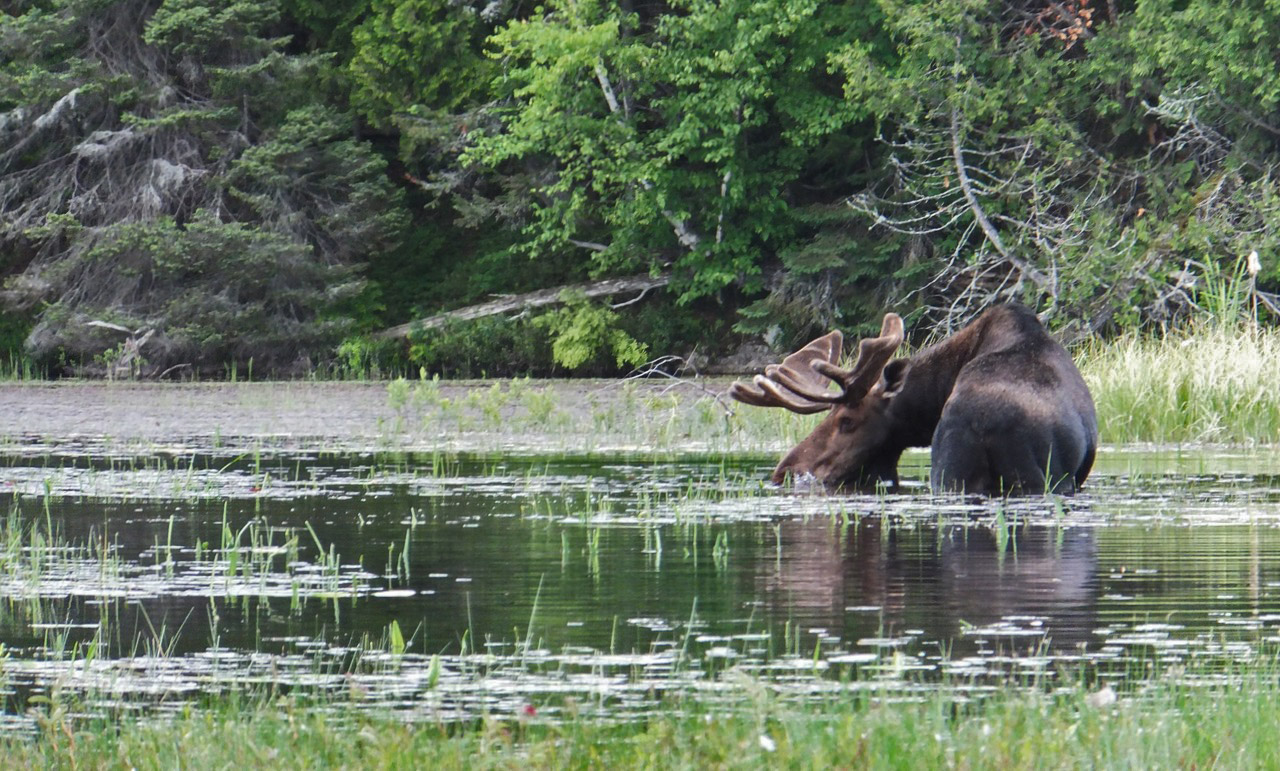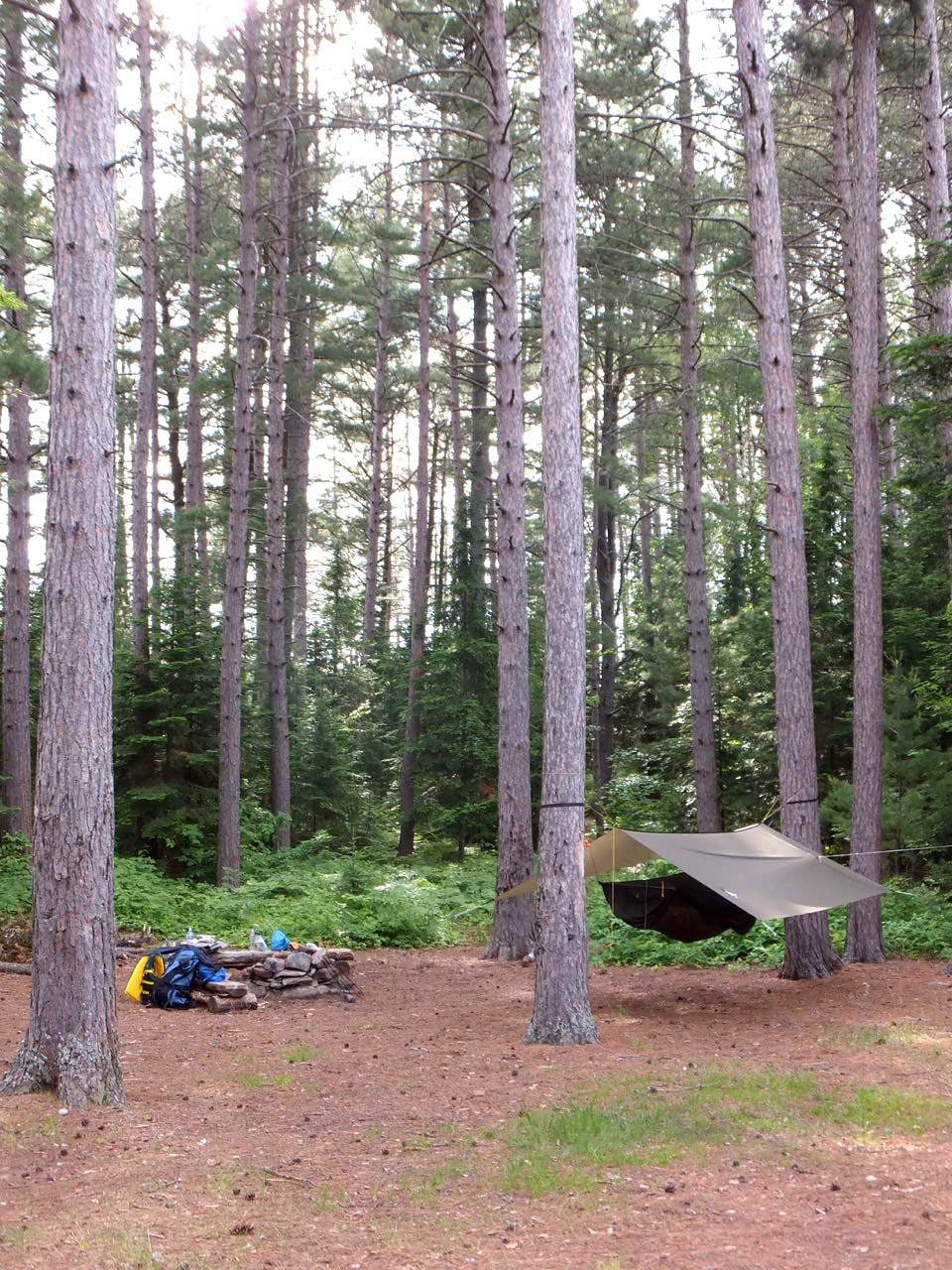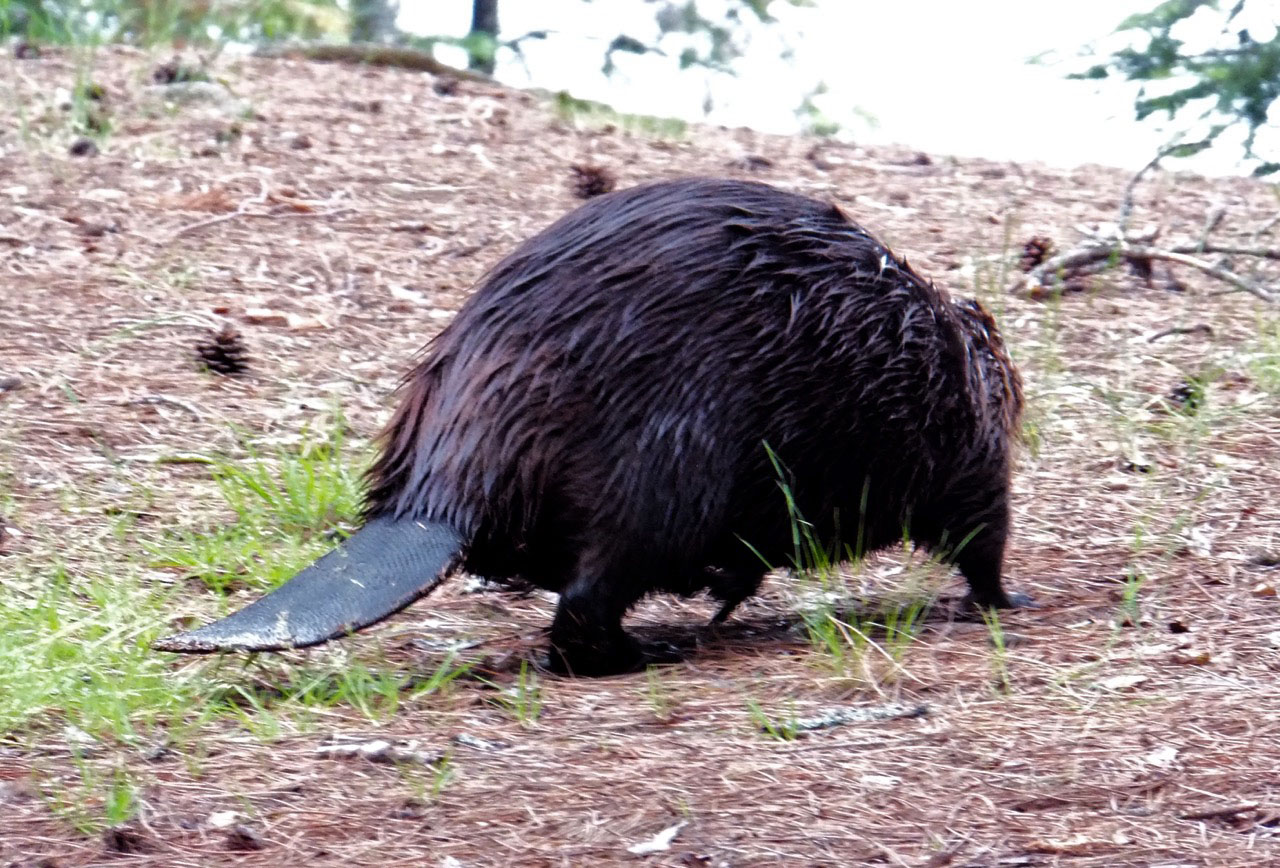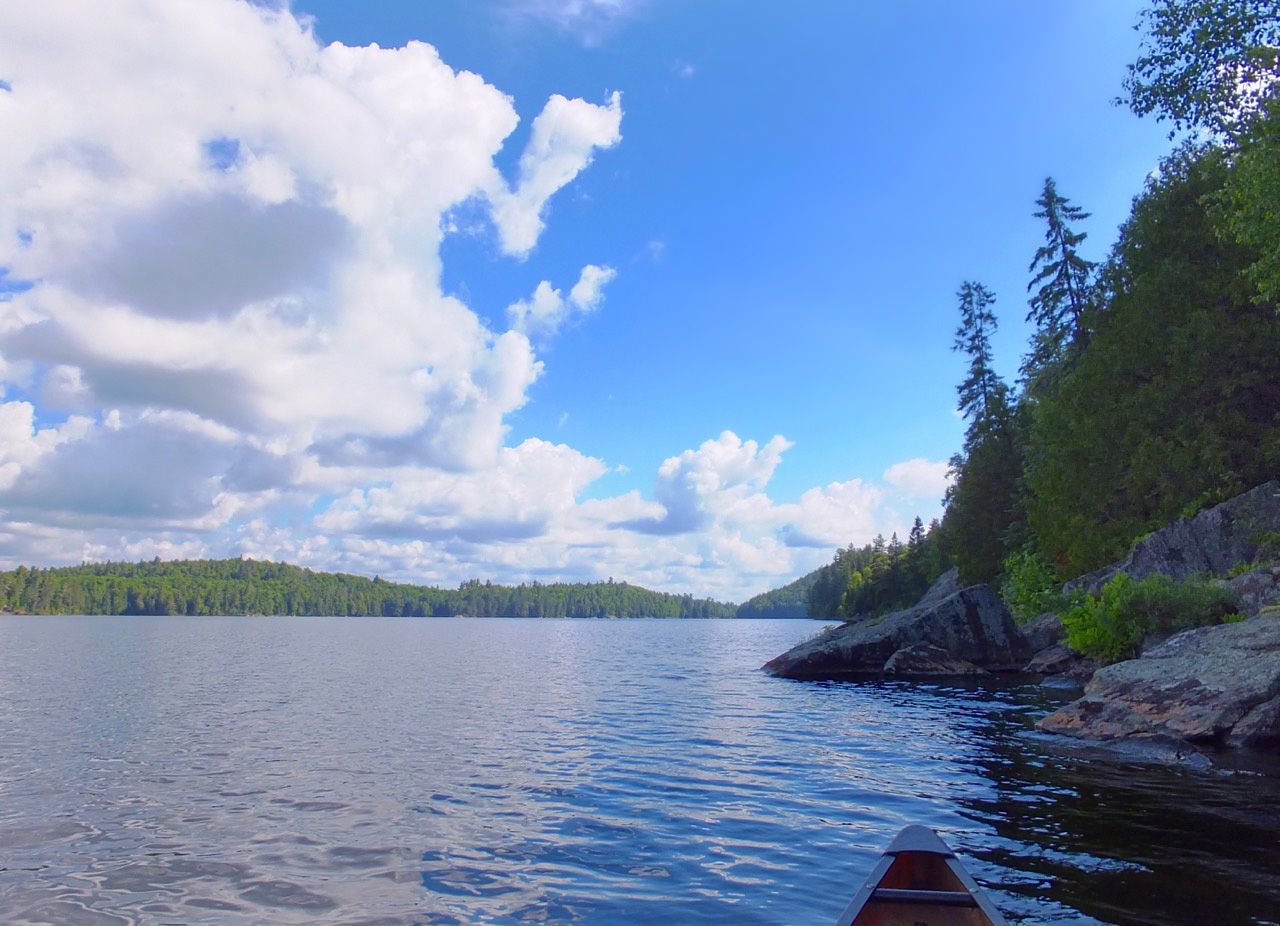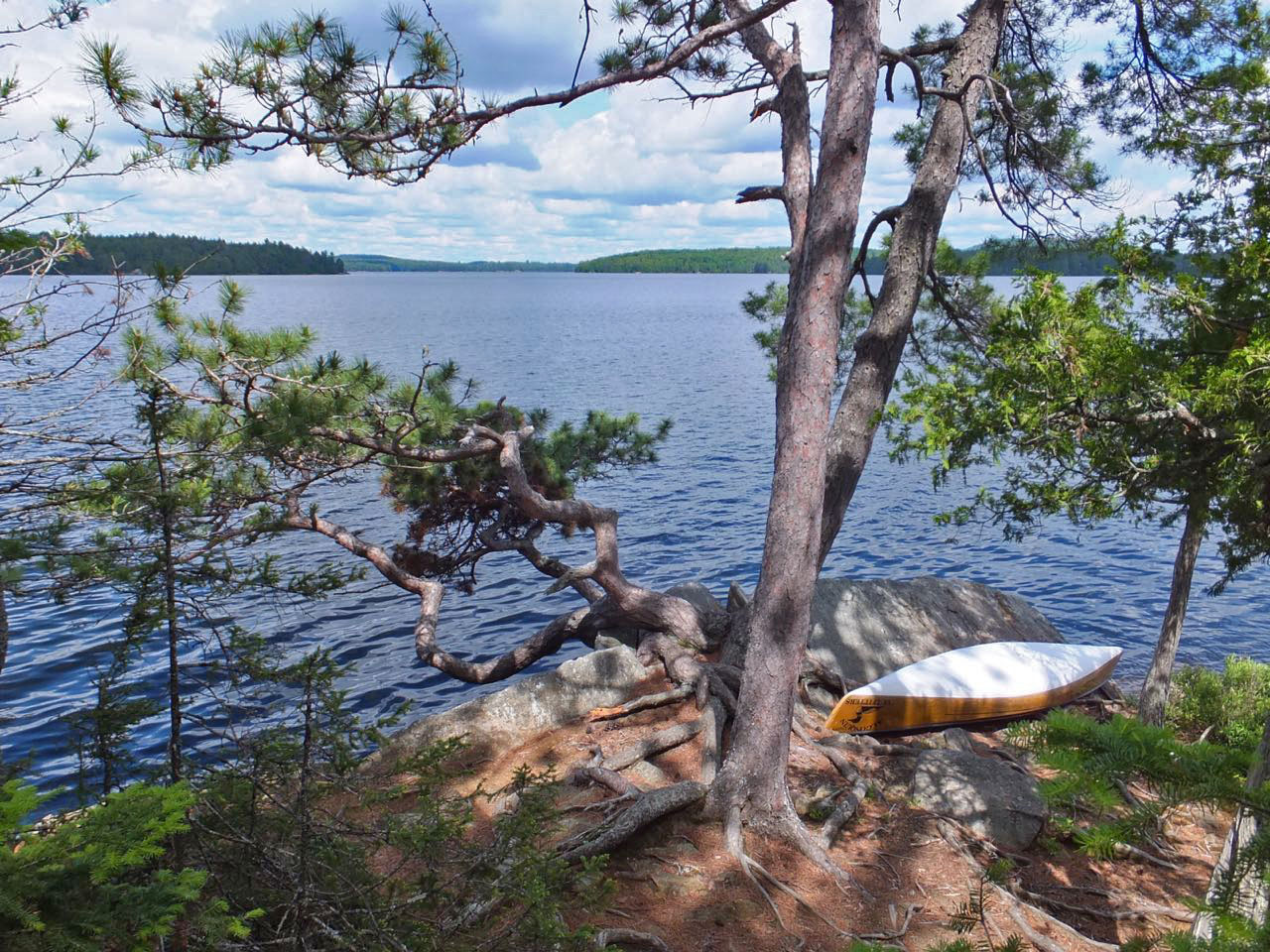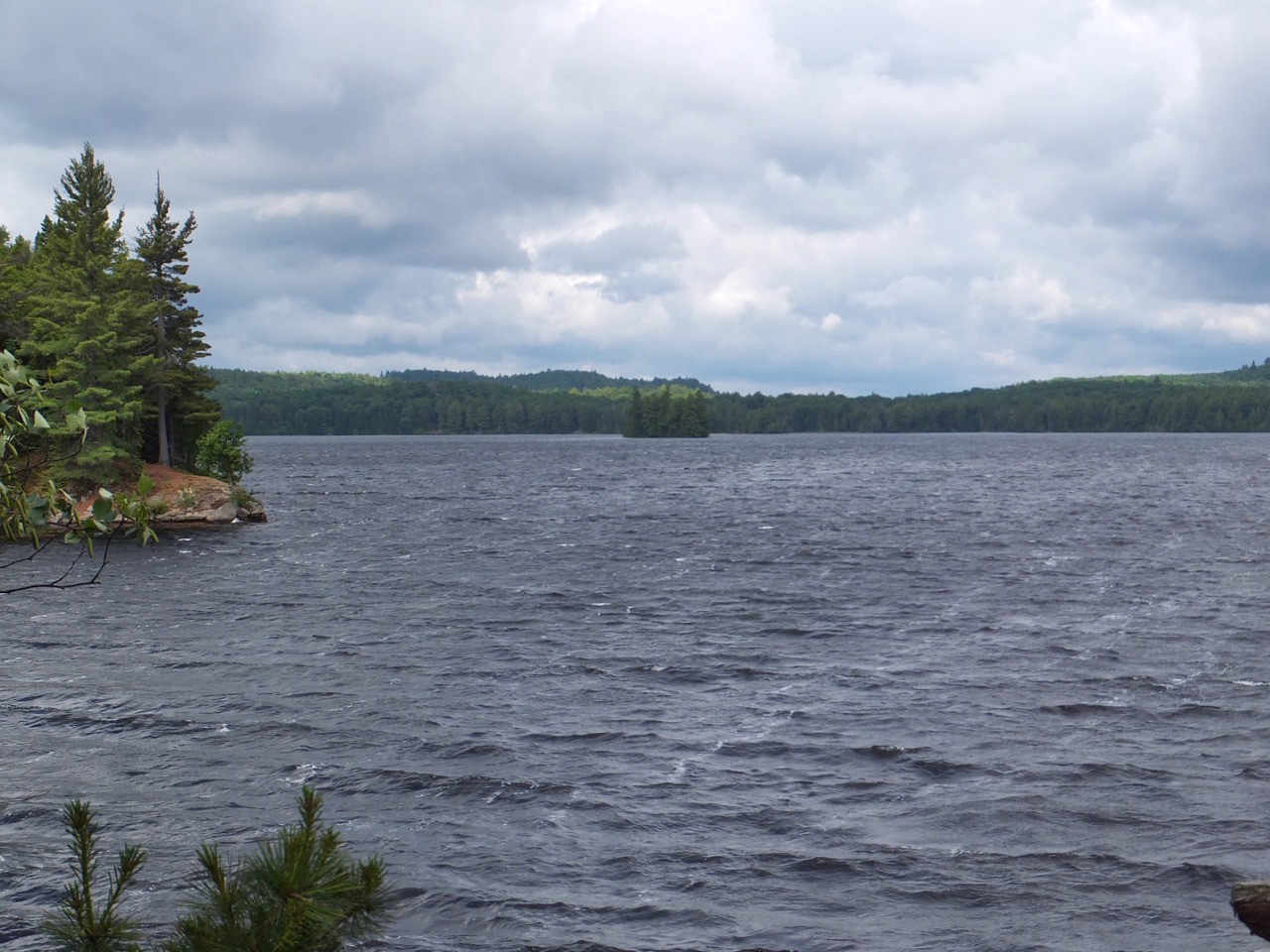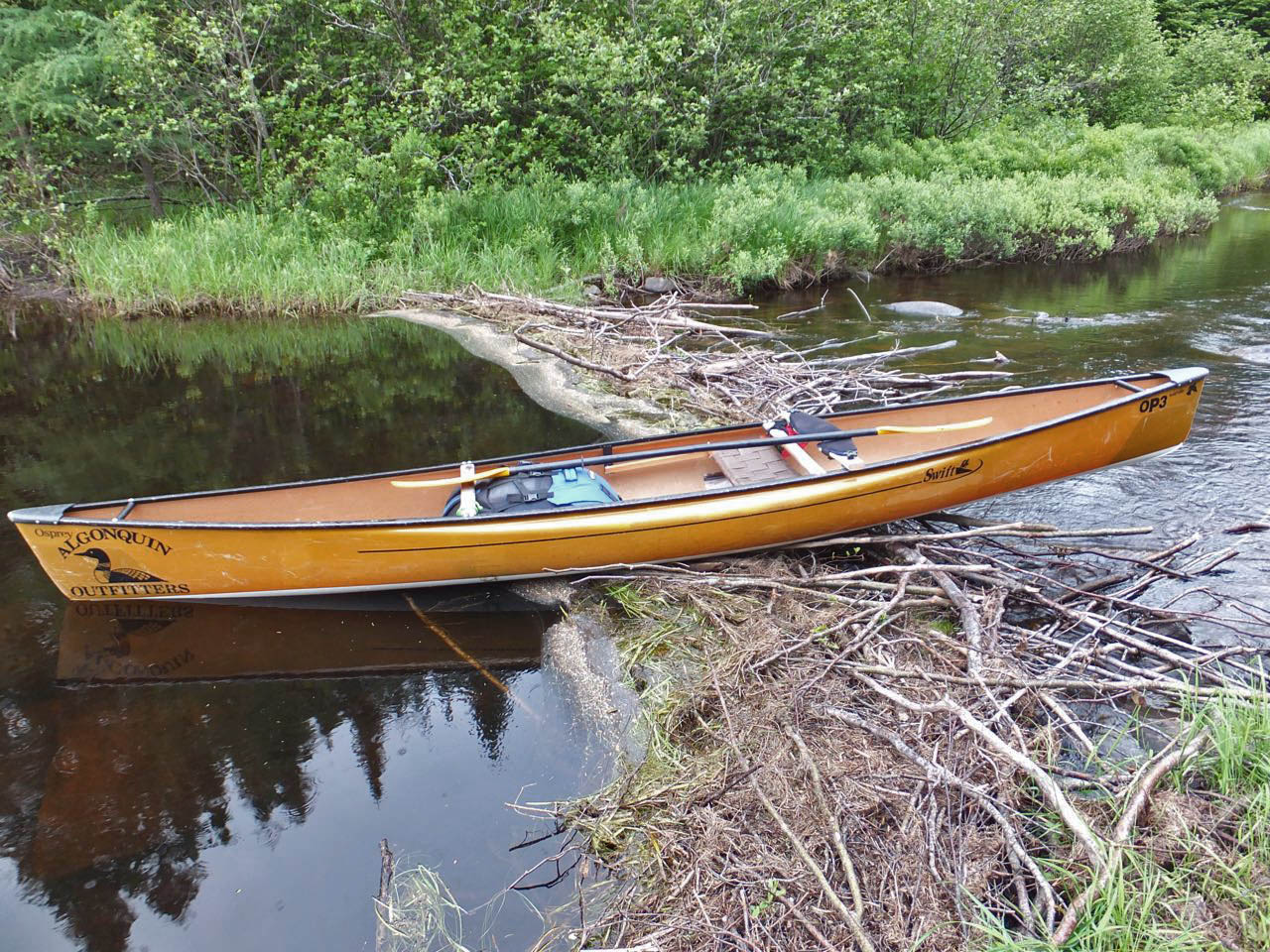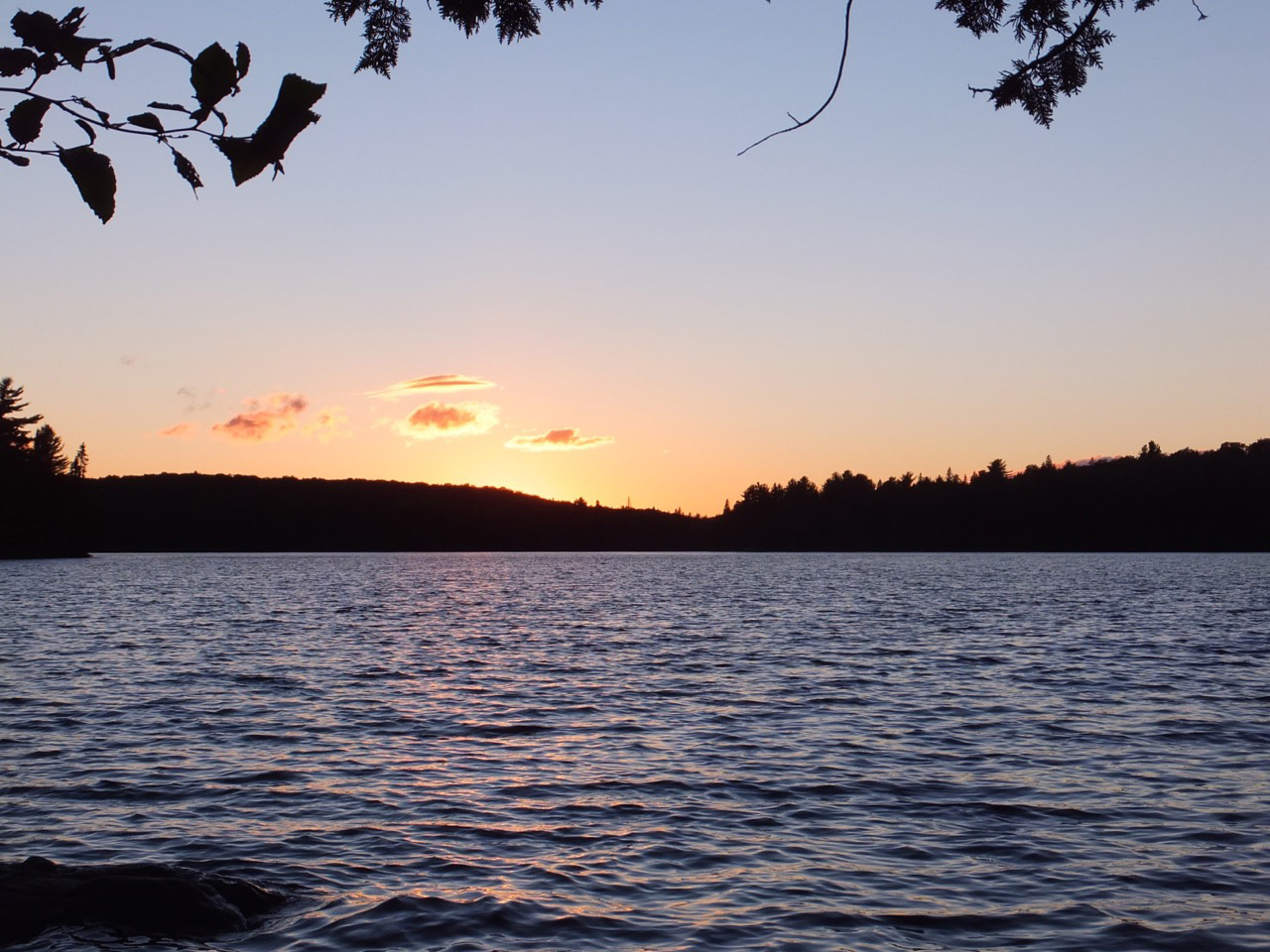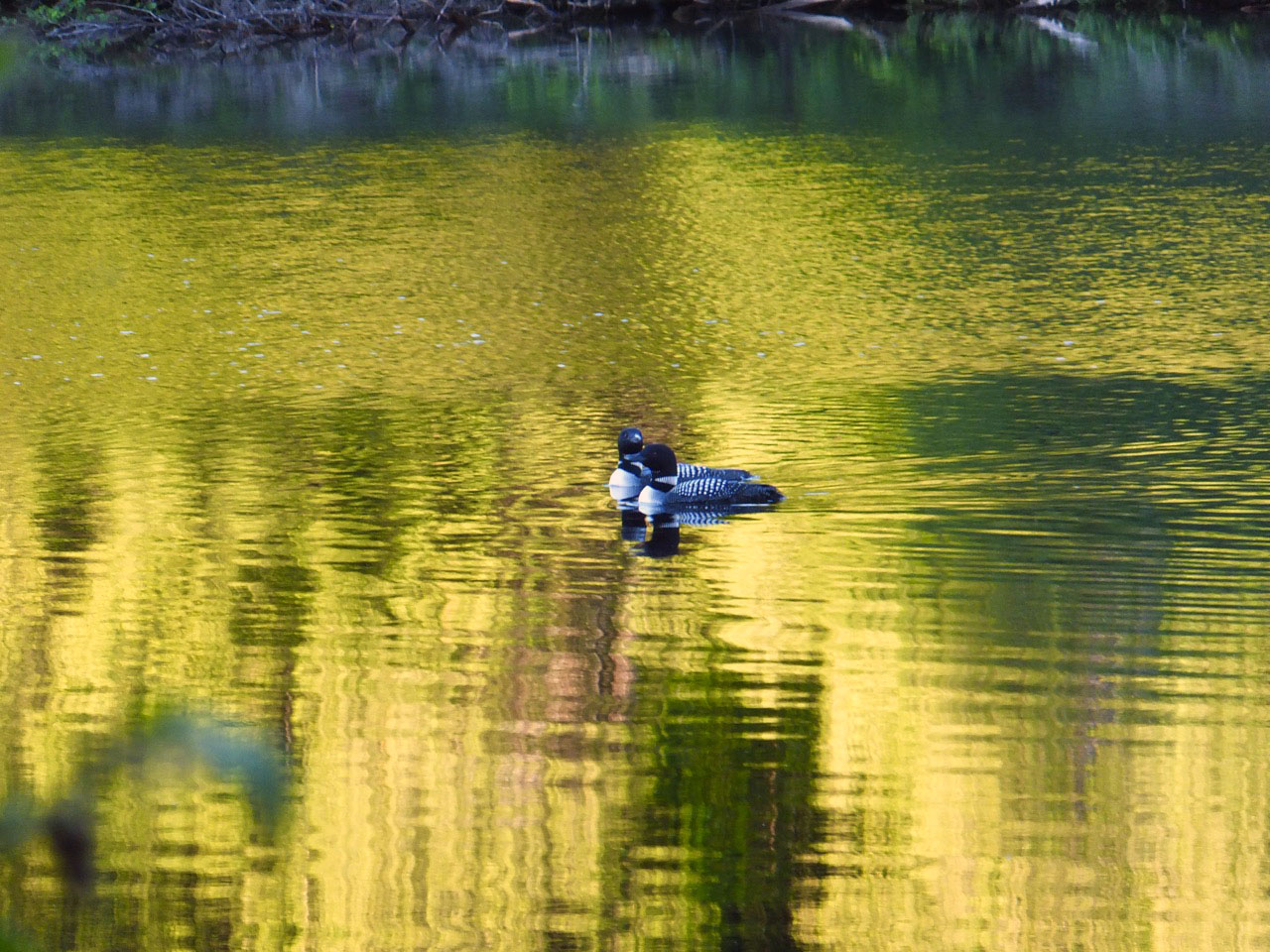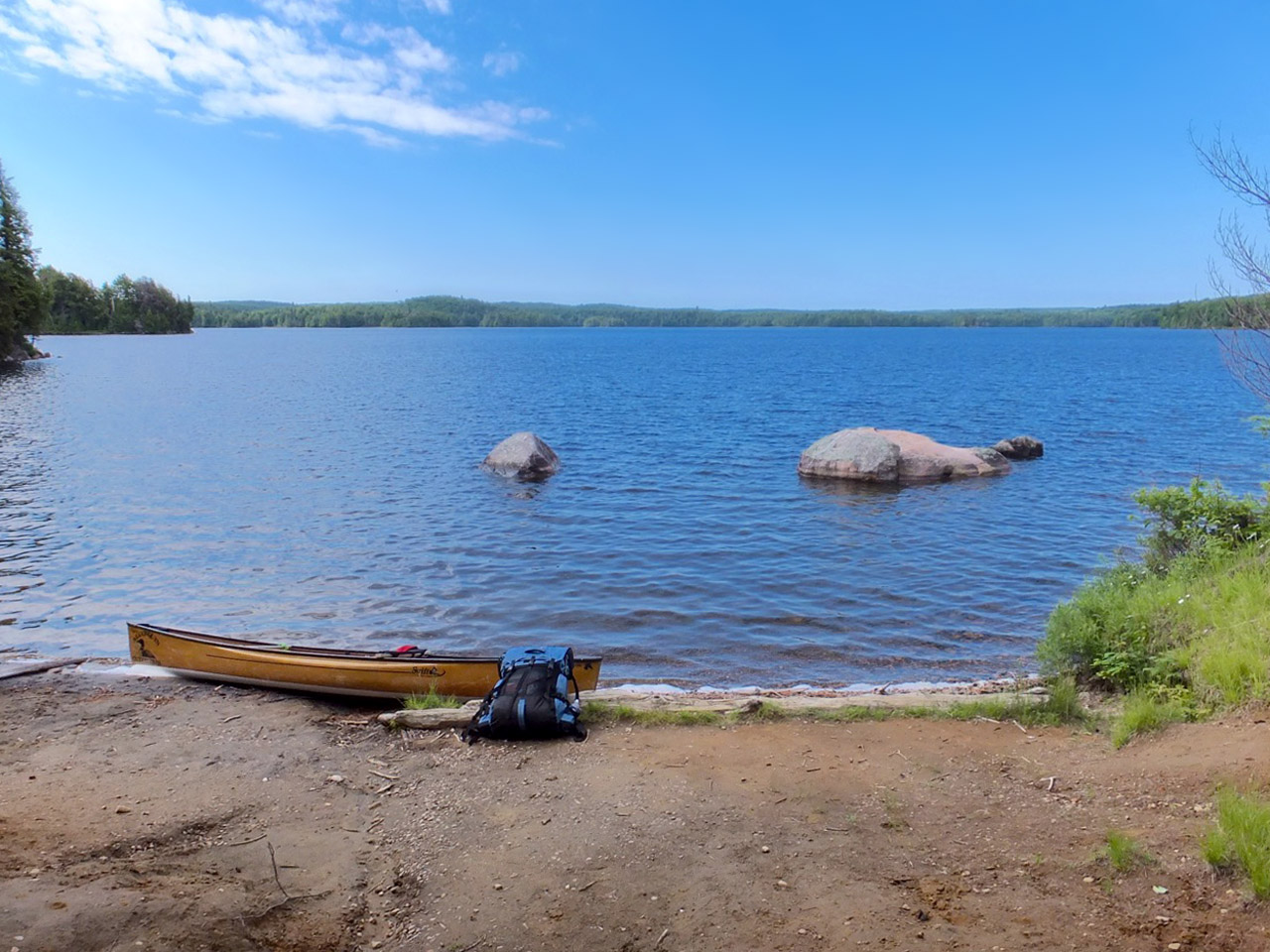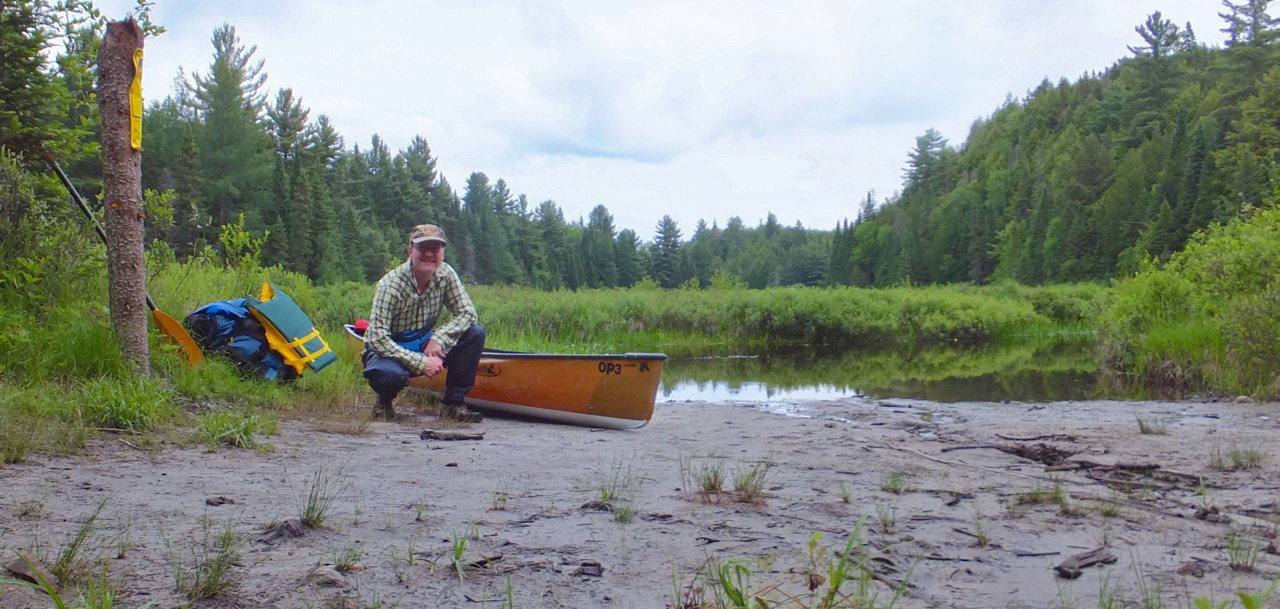McIntosh - White Trout - Big Trout - Otterslide - Burnt Island
June 20-25, 2015 by Ralph Neelands
|
Introduction My colleagues at work questioned my sanity. "Umm, June canoe trip? Isn't that going to be buggy?" In 2014, I had visited the southern part of the park during the same week. The bugs had been horrendous. But I had survived. And I'd discovered that June provides fantastically long days of paddling, and quiet uncrowded lakes. And the bugs? Well, they could hardly be worse this year.
Day One: Canoe Lake to McIntosh Lake I rented a solo canoe at Oxtongue Lake just outside the park. I launched at Canoe Lake, where a tailwind propelled me north. One portage, a pleasant paddle, and one easy lift-over later, I found myself at Tom Thomson Lake enjoying a lunch of KD and taking in the glittering waters.
The first real challenge loomed .. the 2390m portage to Ink Lake. For the first time, I was going to do single-portages, if I could. My new canoe pack allowed me to stuff everything into one pack, and I'd lightened up as best I could. I'd done a double carry from Canoe to Joe, just to warm up. There was no canoe flipping for me. I just walked my outstretched hands up the gunwales until the canoe settled on my shoulders. After a few steps, I breathed a sigh of relief. It was doable, if a bit uncomfortable. Yay! More paddling time, less portaging.
I quickly crossed to Ink Lake's outlet. The mysterious black waters, the boreal-style ecosystem, the feeling of speed that the close banks provide, the need to time your turns as the narrow river twists, all make the Ink River one of my favourite spots in the park.
I love the "reveal" as you turn the last bend and see McIntosh Lake before you. I took a familiar campsite near the southeast end of the lake, set up my bridge hammock, and got to bed early as the skies clouded over.
Day Two: McIntosh to White Trout The next morning, I woke up excited to leave familiar routes and explore some new (to me) territory. The lake was glass and the skies were overcast, as I toured the empty lake and her islands. I was in no hurry, and it was the longest day of the year. At the take-out, a couple in bug head-nets coming down the portage trail prompted me to "deet-up" for the two carries to come. The portages were easy walks, well-maintained with new boardwalks. The short stretch of McIntosh Creek between the portages was a lot of fun, with some current and some rocks to avoid. The second portage gave me enough glimpses of the beautiful creek to make me wish I'd brought my fly-fishing gear.
I pushed out into the last stretch of creek before Grassy Bay. Spotting a small beaver dam ahead, I had an idea to film a video of a lift-over for my photo collection. As I exited the canoe to stand on the dam, a loud snort broke the silence. The bush to the left shook and a huge bull moose emerged less than fifteen feet away! While I stood frozen to the dam, he ran past me along the grassy bank, eventually stomping into the water ahead of me. I came to my senses, and fumbled with my camera, finally capturing some shaky video. When my heart rate returned to normal, I cautiously paddled down the stream to where it opened up into Grassy Bay. Mr. Moose had moved off to one side, but gave me the stink-eye as I passed out into the bay.
Grassy Bay was a long paddle, especially when the adrenaline rush of seeing the moose wore off. Gradually the clouds broke up, and the wind grew. It was sunny and gusty by the time I found a campsite on White Trout Lake, on a long narrow C-shaped island that divides the lake. A staircase led up to a flat site on top of what felt like an esker. The site just as quickly dropped on the other side to reveal the lake's northern expanse. On the flat top of the island, red pines provided an excellent spot to hang my hammock for the night.
As I was preparing dinner, I had my second animal encounter. A beaver walked right through the campsite! I'd never seen such a thing. He nonchalantly waddled by, and descended the slope to the south side of the lake. Even beavers take short cuts.
It was a beautiful evening, with the sun still shining and strong winds banishing the flies. What a great day of leisurely paddling, new territory for me, and two close-up animal sightings. On a high, I sat admiring the lake until the sun went down on the longest day of the year. Day Three: White Trout to Big Trout The next morning dawned glorious and sunny. My plan was to just go to Big Trout Lake. No portages. Just exploring. I took my time paddling up the shore of the lake toward the narrows, in the shadow of White Trout's cliffs, trying to avoid the strong sunshine.
I was filled with anticipation of the grand vista awaiting me. But instead, I received a cold welcome to Big Trout Lake. From a rocky islet ahead, two gulls came skimming along the surface of the water. When they got about 30 metres away, they swooped upwards and released their toxic bombs, which dropped in the water not far from my canoe. I took evasive action, hugging the southeast shore until they relented. Beware seagulls at the end of June! I toured the southern islands and bays of Big Trout Lake, settling on a campsite on the south shore. After lunch, I prepared to take a cruise around the lake. However, high winds and waves came up and quashed that plan. I napped and read the day away.
Day Four: Big Trout to Otterslide Lake The next day was the same story .. high winds and waves. I managed to launch the boat and with a lot of effort and careful timing, I rounded a point into the south bay, where the waves were less crazy.
In fact, once off the main lake, approaching the the base of a waterfall, it became calm and buggy. The rest of the day I spent with my black fly buddies, as I ascended twisty Otterslide Creek and her many beaver dams and portages.
I hadn't spoken to anyone since the portage at McIntosh Lake, although I had seen a canoe in the distance on Big Trout. So coming around a bend in the creek, I was shocked to see another soloist. I'd blundered into the frame of the picture he was taking. I apologized, but he explained I hadn't ruined his shot after all. He'd been photographing a bug in the canoe! Turned out, he was an entomologist from the U.K., attending a conference in Toronto on invasive insects, where he'd been gathering information on ash borers and longhorn beetles. "Ash borers in Britain?" I asked. "Yes," he replied, "It's not a question of if, but when." You never know who you'll meet or what you'll learn on a canoe trip. Finally reaching Otterslide Lake, I made a white-knuckle crossing to the big island and hunkered down out of the wind, which had suddenly sprung up again. I could hardly wait to tell my dad I'd made it to Otterslide Lake. When he was studying in Toronto in the '50s, a couple of his Toronto friends convinced him to join them on a canoe trip. Despite what you might think, people in Northern Ontario (where he came from) didn't do much canoeing. They preferred to use motor boats on the countless lakes. They felt that Toronto folks mythified the woods and the romance of canoe travel. He recalls portaging into Otterslide from Happy Isle. It was hell. The canoes were heavy and the bugs were bad. When he complained to his Toronto friends, they said, "Oh, don't worry. It'll be worth it. Otterslide's a great lake. It'll be worth it." When they got there, my dad took one look and declared, "It's just another g&%$#n lake!" It's one of those family stories. Whenever someone raves about how good some destination is going to be, "Just another g&%$#n lake!" So I finally made it to Otterslide. After the trip, I called my dad and told him I made it there. You can guess his reply. The winds finally died and the clouds glowed at sunset.
Day Five: Otterslide to Burnt Island Next morning the lake was glass. Loons silently patrolled the narrows by my campsite.
I paddled up to Little Otterslide and crossed the portage to Burnt Island Lake. I wanted to take my time and explore more of this big lake.
Unfortunately, by the time I got to the central throat of the lake, the winds had risen. My shoulders were burning as I fought the southwest wind. To make things worse, every campsite I stopped at had trees in the wrong places for my hammock, or had giant widow-makers ready to fall on top of me while I slept. Eventually I ran out of lake, and settled on the island opposite the portage to Baby Joe Lake. It's a sad little island where almost every tree has been limbed by firewood-seekers. It ought to be given a rest for ten years or so. Day Six: Burnt Island to Canoe Lake I got going early under overcast skies and portaged over to Baby Joe. The mosquitoes were thick at Baby Joe and in fact all along the Joe Lakes. I stopped to chat with a group of British campers. They were leaving early because the bugs were so bad. Crossing Canoe Lake, I felt I'd had a successful trip. I achieved my goal of linking different lakes that I'd visited on other trips. Now after 9 trips, I have a good sense of central and southern Algonquin. Travelling in June is great. I stayed on campsites I would never get in the crowded summertime. The weather was warm but not too sweaty. I saw wildlife. High winds caused me problems, trapping me in camp for many hours on occasion, but single portaging made up for lost time. And the bugs? Mosquitoes were bad, but only in a few places. Black flies were few. Overall, it was an interesting trip through a good mix of lakes and rivers during the longest days of the year.
More photos and trip reports on my photo website: www.neelands.smugmug.com |
||||||||||||||||||||||||||||||||||||||||||||||||||||||||||||||||||||||||
